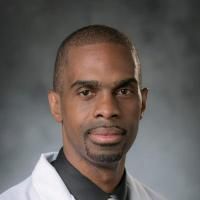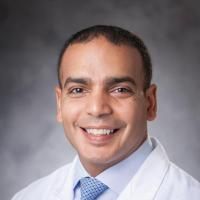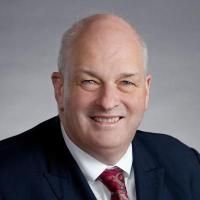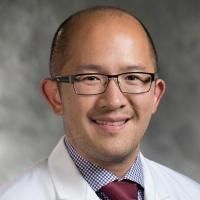Proximal Lumbar Anterior Column Realignment for Iatrogenic Sagittal Plane Adult Spinal Deformity Correction: A Retrospective Case Series.
Date
2024-11
Journal Title
Journal ISSN
Volume Title
Repository Usage Stats
views
downloads
Citation Stats
Attention Stats
Abstract
Background
Anterior column realignment (ACR) is a powerful minimally invasive surgery technique to restore sagittal alignment in adult spinal deformity (ASD). This can accomplish similar segmental lordosis restoration as 3-column osteotomy with less blood loss and comparable complication rates. ACR can be performed at adjacent disease segments in the proximal lumbar spine in revision cases. However, two thirds of physiologic lordosis occurs between L4-S1, and concerns remain about altered lumbar morphology. We evaluated patients who underwent proximal lumbar ACR for iatrogenic flatback deformity.Methods
A total of 19 consecutive patients who underwent L1-2 or L2-3 ACR were retrospectively analyzed. All patients were treated with lateral minimally invasive surgery interbody technique, followed by posterior reconstruction with Smith-Peterson osteotomy. Preoperative and postoperative radiographic and clinical outcomes were obtained.Results
Mean follow-up was 19 months. All but 1 patient had a history of prior lumbar or lumbo-sacral fusion. Sagittal vertical axis and pelvic incidence-lumbar lordosis decreased from 11.9 cm to 6.1 cm (P < 0.0001) and 34.2° to 12.8° (P < 0.0001). Segmental lordosis increased from -2.7° to 21.9° (P < 0.0001). Proximal lumbar lordosis increased from -0.4° to 22.6° (P < 0.0001), and lordosis distribution index decreased from 79.5% to 48.9% (P < 0.0001). Mean Oswestry Disability Index and numeric pain rating scale back pain scores decreased from 58.0 to 36.2 (P = 0.0041) and 7.9 to 3.4 (P < 0.0001), respectively. Patient-Reported Outcomes Measurement Information System Physical and Mental Health T-scores increased from 34.1 to 43.3 (P = 0.0049) and 40.4 to 45.0 (P = 0.0993), respectively. Major complication rate was 15.8%. One patient required revision for mechanical failure. There were no permanent neurological or vascular injuries.Conclusions
Proximal lumbar ACR plus Smith-Peterson osteotomy can achieve sagittal correction with low major complication rates in patients with ASD and prior distal fusion. Differentially increasing proximal lumbar lordosis and lowering lumbar distribution index did not have deleterious effects on radiographic or clinical outcomes. Further work is needed to understand the effect of proximal ACR in the surgical management of ASD.Type
Department
Description
Provenance
Subjects
Citation
Permalink
Published Version (Please cite this version)
Publication Info
Frerich, Jason M, Christopher F Dibble, Christine Park, Stephen M Bergin, C Rory Goodwin, Muhammad M Abd-El-Barr, Christopher I Shaffrey, Khoi D Than, et al. (2024). Proximal Lumbar Anterior Column Realignment for Iatrogenic Sagittal Plane Adult Spinal Deformity Correction: A Retrospective Case Series. World neurosurgery. p. S1878-8750(24)01812-6. 10.1016/j.wneu.2024.10.109 Retrieved from https://hdl.handle.net/10161/31777.
This is constructed from limited available data and may be imprecise. To cite this article, please review & use the official citation provided by the journal.
Collections
Scholars@Duke

Courtney Rory Goodwin
Associate Professor of Neurosurgery, Radiation Oncology, Orthopedic Surgery.
Director of Spine Oncology,
Associate Residency Program Director
Third Year Study Program Director Neurosciences, Duke University School of Medicine
Director of Spine Metastasis, Duke Center for Brain and Spine Metastasis, Department of Neurosurgery
Duke Cancer Institute, Duke University Medical Center

Muhammad Abd-El-Barr
As a Neurosurgeon with fellowship training in Spine Surgery, I have dedicated my professional life to treating patients with spine disorders. These include spinal stenosis, spondylolisthesis, scoliosis, herniated discs and spine tumors. I incorporate minimally-invasive spine (MIS) techniques whenever appropriate to minimize pain and length of stay, yet not compromise on achieving the goals of surgery, which is ultimately to get you back to the quality of life you once enjoyed. I was drawn to medicine and neurosurgery for the unique ability to incorporate the latest in technology and neuroscience to making patients better. I will treat you and your loved ones with the same kind of care I would want my loved ones to be treated with. In addition to my clinical practice, I will be working with Duke Bioengineers and Neurobiologists on important basic and translational questions surrounding spinal cord injuries (SCI), which we hope to bring to clinical relevance.

Christopher Ignatius Shaffrey
I have more than 25 years of experience treating patients of all ages with spinal disorders. I have had an interest in the management of spinal disorders since starting my medical education. I performed residencies in both orthopaedic surgery and neurosurgery to gain a comprehensive understanding of the entire range of spinal disorders. My goal has been to find innovative ways to manage the range of spinal conditions, straightforward to complex. I have a focus on managing patients with complex spinal disorders. My patient evaluation and management philosophy is to provide engaged, compassionate care that focuses on providing the simplest and least aggressive treatment option for a particular condition. In many cases, non-operative treatment options exist to improve a patient’s symptoms. I have been actively engaged in clinical research to find the best ways to manage spinal disorders in order to achieve better results with fewer complications.

Khoi Duc Than
I chose to pursue neurosurgery as a career because of my fascination with the human nervous system. In medical school, I developed a keen interest in the diseases that afflict the brain and spine and gravitated towards the only field where I could help treat these diseases with my own hands. I focus on disorders of the spine where my first goal is to help patients avoid surgery if at all possible. If surgery is needed, I treat patients using the most advanced minimally invasive techniques available in order to minimize pain, blood loss, and hospital stay, while maximizing recovery, neurologic function, and quality of life. In my free time, I enjoy spending time with my family and friends. I am an avid sports fan and love to eat. I try to stay physically fit by going to the gym and playing ice hockey.
Unless otherwise indicated, scholarly articles published by Duke faculty members are made available here with a CC-BY-NC (Creative Commons Attribution Non-Commercial) license, as enabled by the Duke Open Access Policy. If you wish to use the materials in ways not already permitted under CC-BY-NC, please consult the copyright owner. Other materials are made available here through the author’s grant of a non-exclusive license to make their work openly accessible.
